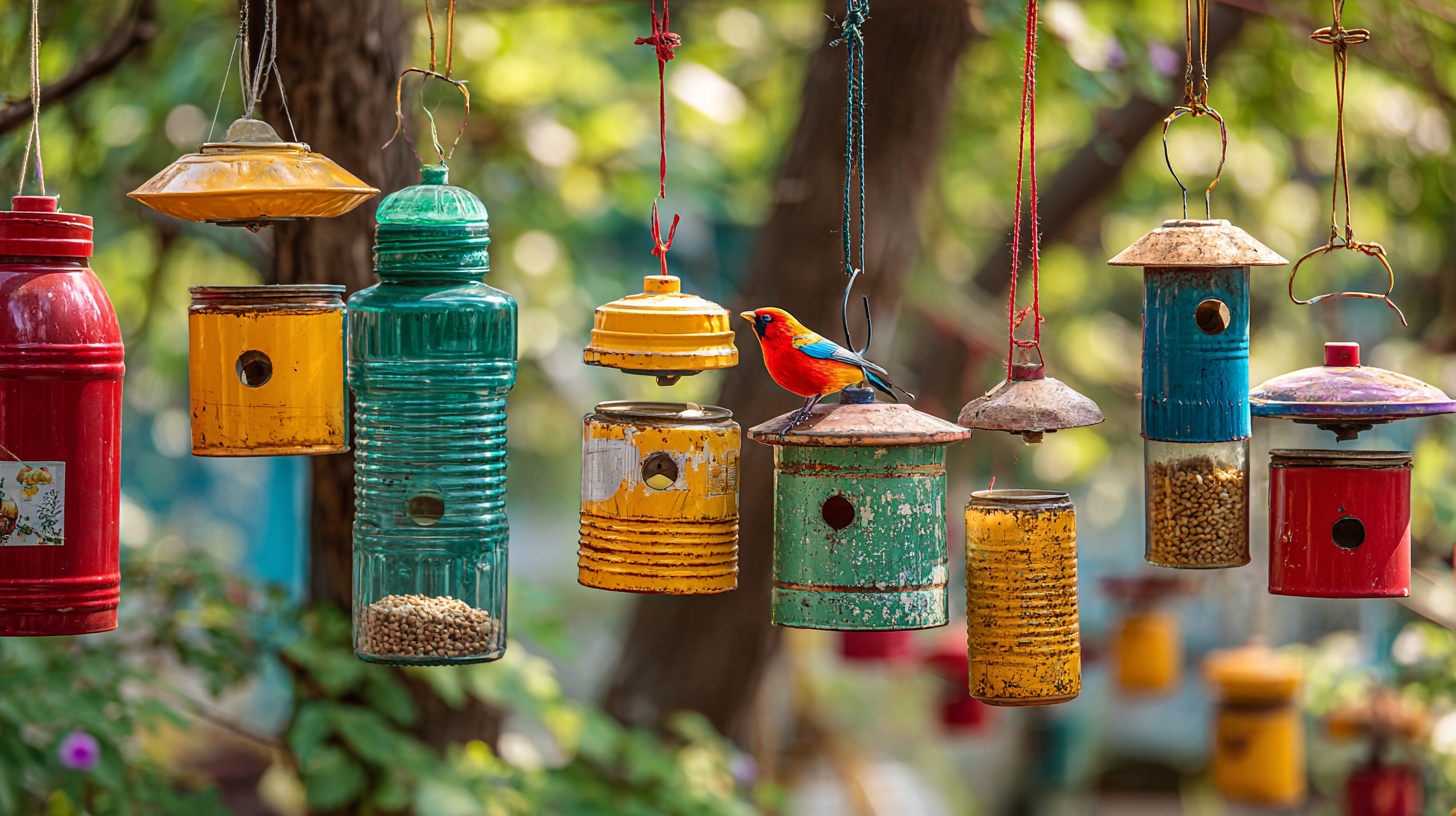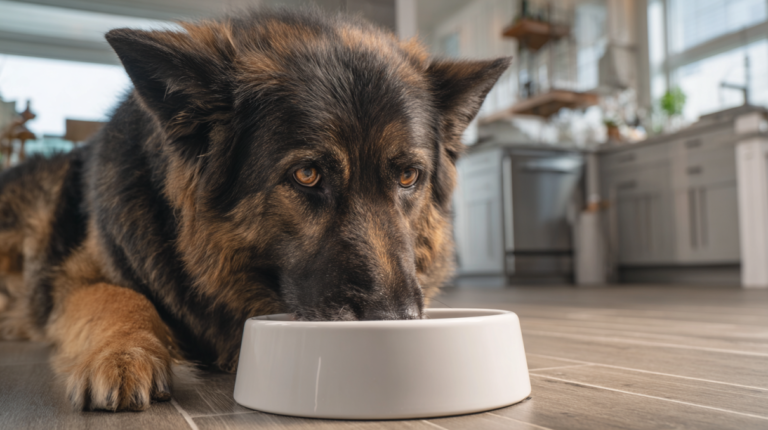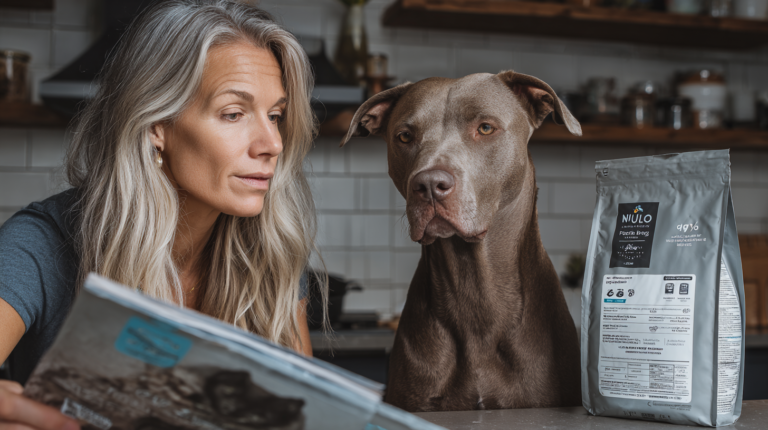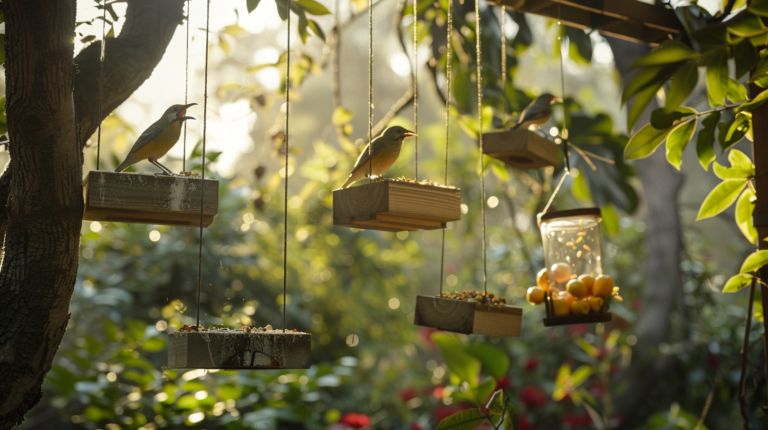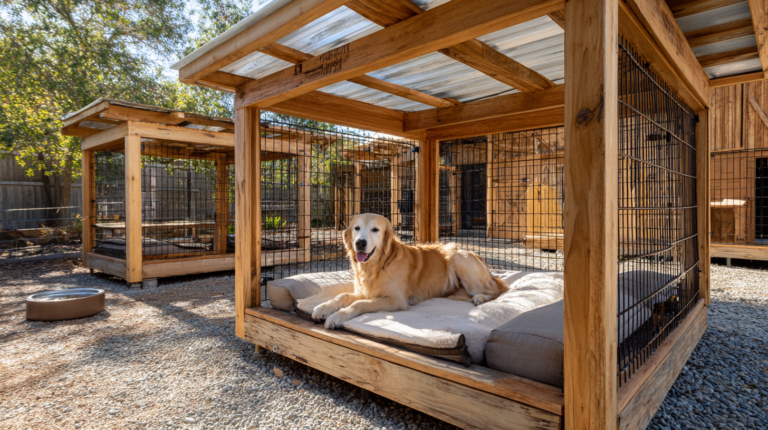Discover 7 creative DIY bird feeder projects using recyclables! Transform plastic bottles, pinecones & more into beautiful bird havens. Eco-friendly, budget-friendly bird feeding solutions.
Table of Contents
Introduction

Creating DIY bird feeders from recyclable materials is not only an environmentally friendly way to reduce waste but also provides essential nourishment for our feathered friends while bringing joy and wildlife viewing opportunities right to your doorstep. These homemade projects offer a perfect blend of creativity, sustainability, and wildlife care—making them ideal activities for individuals, families, or classrooms looking to connect with nature. Whether you’re an avid bird watcher or simply want to add more biodiversity to your outdoor space, DIY bird feeders can transform ordinary recyclables into extraordinary wildlife habitats that benefit both birds and the environment.
According to the National Audubon Society, more than 59 million Americans engage in bird feeding activities, contributing over $4 billion annually to bird food and accessories. This growing interest in backyard bird feeding highlights not only our fascination with avian visitors but also our collective desire to support local wildlife. By creating DIY bird feeders from items you’d otherwise discard, you’re participating in a meaningful conservation effort while enjoying the therapeutic benefits of crafting and wildlife observation.
In this comprehensive guide, we’ll explore seven innovative DIY bird feeder projects using common household recyclables, complete with step-by-step instructions, material lists, bird feeding tips, and expert insights to help you create functional, attractive feeding stations that birds will flock to year-round.
Why Make DIY Bird Feeders from Recyclables?

Before diving into specific projects, let’s consider the significant benefits of creating homemade bird feeders from recycled materials:
Environmental Impact
- Waste Reduction: The average American generates approximately 4.9 pounds of waste daily, according to the Environmental Protection Agency (EPA). Repurposing items like plastic bottles, milk cartons, and tin cans diverts them from landfills.
- Resource Conservation: Creating new products from virgin materials requires significant energy and resources. By upcycling, you’re extending the useful life of existing materials.
- Educational Value: DIY bird feeder projects provide tangible lessons about recycling, wildlife conservation, and sustainable living—especially valuable for teaching children about environmental stewardship.
Benefits for Birds
- Critical Nutrition: Bird feeders provide supplementary food sources, particularly important during harsh weather conditions or migration periods when natural food may be scarce.
- Species Support: Dr. Emma Mitchell, ornithologist at Cornell University’s Bird Lab, notes: “Properly maintained bird feeders can support up to 25% more bird species in suburban areas compared to neighborhoods without feeders.”
- Habitat Creation: In increasingly urbanized environments, DIY feeders create microhabitats that attract and support diverse bird populations.
Benefits for Humans
- Connection with Nature: Bird feeding creates opportunities to observe wildlife behavior up close.
- Stress Reduction: Studies show that bird watching activities correlate with reduced stress levels and improved mental wellbeing.
- Budget-Friendly Hobby: Using recyclables makes bird feeding accessible regardless of budget constraints.
Now that we understand the multifaceted benefits, let’s explore seven creative DIY bird feeder projects using common recyclable materials found in most households.
Essential Materials and Tools
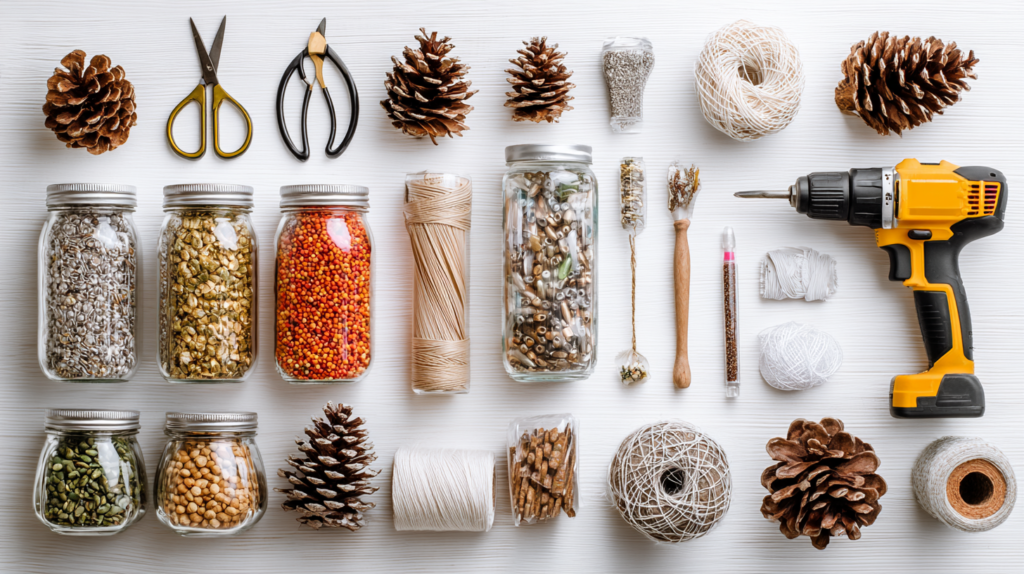
Before beginning any DIY bird feeder project, gather these basic supplies:
- Tools: Scissors, craft knife, hole punch, twine or string, measuring tape, and permanent markers
- Cleaning Supplies: Mild soap solution for thoroughly cleaning all recyclables before use
- Bird-Safe Materials: Non-toxic, waterproof glue, food-safe paint or sealants if decorating
- Bird Food: Black oil sunflower seeds, nyjer seeds, mixed birdseed, suet, or fruit depending on target bird species
Safety Note: Always thoroughly clean and dry all recyclable materials before using them for bird feeders to prevent harmful residues from contacting bird food.
Project 1: Classic Plastic Bottle Bird Feeder
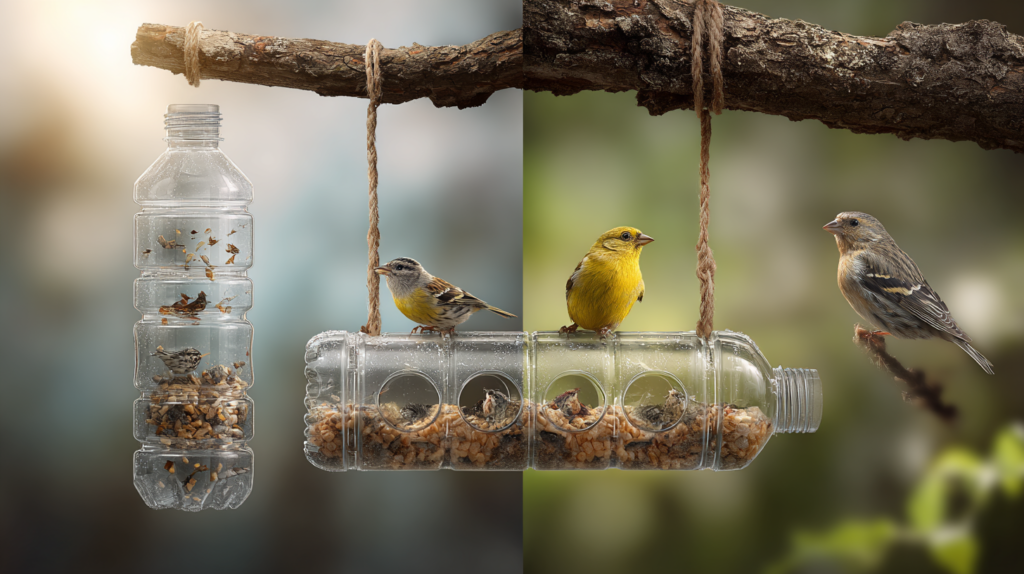
The plastic bottle bird feeder is perhaps the most versatile and easy-to-create option for beginners. This design can be adapted for various bird species by simply adjusting the size of feeding ports.
Materials Needed:
- Clean plastic bottle (16oz to 2-liter size)
- Wooden spoons, pencils, or dowels for perches
- Sharp scissors or craft knife
- Twine or strong cord for hanging
- Bird seed appropriate for local species
Step-by-Step Instructions:
- Preparation: Thoroughly wash and completely dry your plastic bottle. Remove any labels and adhesive residue.
- Create Feeding Ports: Using a craft knife or scissors, cut 2-4 circular or diamond-shaped holes (approximately 1-2 inches in diameter) around the bottle’s circumference. Position these holes about 4-5 inches from the bottom of the bottle.
- Install Perches: Directly below each feeding hole, create small horizontal slits and insert wooden spoons, pencils, or wooden dowels to serve as perches. These should extend about 3 inches from the bottle to give birds comfortable landing spots.
- Drainage System: Create several small holes in the bottle’s bottom to allow rainwater to drain and prevent seed spoilage.
- Hanging Mechanism: Puncture two holes near the top of the bottle, thread strong twine or cord through to create a hanging loop.
- Fill and Hang: Remove the bottle cap, fill with birdseed, replace the cap, and hang your feeder from a tree branch, hook, or feeding station about 5-6 feet above ground level and at least 10 feet from dense shrubs that might harbor predators.
Pro Tip: “For increased durability, reinforce the feeding port edges with weatherproof tape,” recommends Jamie Wilson, master gardener and bird enthusiast. “This prevents cracking and extends your feeder’s lifespan through multiple seasons.”
Bird Species Attraction:
This feeder design primarily attracts seed-eating birds like chickadees, finches, sparrows, and cardinals. By adjusting the size of the feeding ports and types of seed, you can customize your feeder for specific species.
Project 2: Pinecone Bird Feeder

Perfect for beginner crafters and young children, pinecone bird feeders combine natural and recyclable materials to create biodegradable feeding stations.
Materials Needed:
- Large pinecones (collected or purchased)
- Peanut butter or vegetable shortening (for bird-safe option)
- Recycled plate or tray for rolling
- Birdseed mixture
- Recycled ribbon, twine, or yarn
- Optional: Dried fruit pieces, crushed eggshells (calcium source)
Step-by-Step Instructions:
- Clean Pinecones: If collecting pinecones yourself, bake them at 200°F for about 30 minutes to eliminate insects and open scales fully.
- Attach Hanging Material: Tie a 12-inch length of recycled ribbon, twine, or yarn securely around the top of the pinecone, creating a loop for hanging.
- Apply Binding Agent: Working over recycled newspaper or cardboard to catch drips, use a recycled knife or popsicle stick to spread peanut butter or vegetable shortening generously between the pinecone scales.
- Add Bird Food: Roll the sticky pinecone in birdseed mixture spread on a recycled plate or tray, pressing gently to ensure seeds adhere well to the binding agent.
- Customize Mix: For additional nutrition, incorporate small pieces of dried fruit, nuts, or crushed eggshells into your seed mix.
- Hang and Observe: Hang your pinecone feeder from tree branches, porch railings, or shepherd’s hooks where you can easily observe visiting birds.
Environmental Note: The beauty of this project lies in its complete biodegradability. When the pinecone feeder has served its purpose, it will naturally decompose, leaving no waste behind.
Bird Species Attraction:
Pinecone feeders particularly attract smaller birds like chickadees, nuthatches, titmice, and various finch species that can easily perch on the pinecone’s textured surface.
Project 3: Milk Carton Seed Dispenser
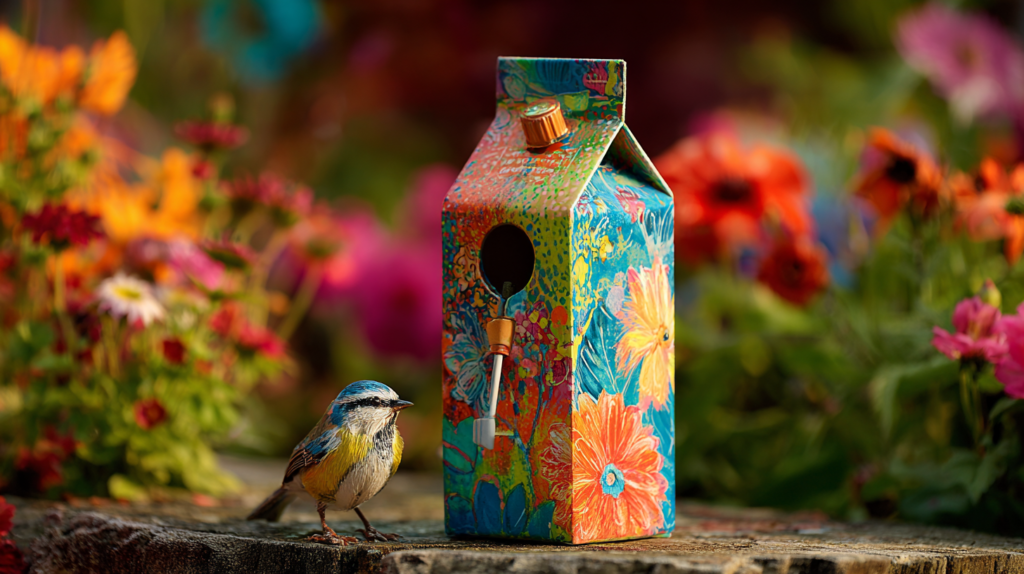
Repurposing milk or juice cartons creates sturdy, weather-resistant bird feeders with excellent protection for seeds.
Materials Needed:
- Clean, dry half-gallon or quart-sized cardboard milk or juice carton
- Scissors or craft knife
- Wooden dowels or pencils for perches
- Waterproof paint or contact paper (optional)
- Hole punch
- Weather-resistant string or wire for hanging
- Birds seeds appropriate for local species
Step-by-Step Instructions:
- Clean Thoroughly: Rinse the carton with hot water and mild soap, then allow it to dry completely for at least 24 hours.
- Waterproof Exterior (Optional): Cover the carton with waterproof contact paper or apply 2-3 coats of non-toxic, outdoor acrylic paint to improve weather resistance and aesthetics.
- Create Feeding Windows: Cut 2-3 rectangular “windows” approximately 2″x2″ on opposite sides of the carton, leaving about 1.5 inches at the bottom to create a seed reservoir.
- Install Perches: About half an inch below each feeding window, poke holes and insert wooden dowels or pencils, extending about 3 inches on either side.
- Add Drainage: Puncture several small holes in the bottom corners to allow moisture drainage.
- Create Hanging Mechanism: Punch two holes near the top of the carton and thread weather-resistant cord, twine, or wire through to create a hanging loop.
- Fill and Position: Pour in birdseed through the original carton opening (which can be stapled closed or left partially open as an additional feeding port), then hang in a sheltered location.
Expert Insight: Wildlife biologist Dr. Sarah Cohen explains, “Milk carton feeders are particularly valuable during rainy seasons because their design keeps seed drier than open feeder styles. The roof-like structure formed by the carton top provides excellent protection from precipitation.”
Extending Longevity:
To maximize the lifespan of your cardboard feeder, position it in a somewhat sheltered location like under eaves or large tree branches to reduce direct exposure to rain and harsh sunlight.
Project 4: Teacup and Saucer Bird Feeder
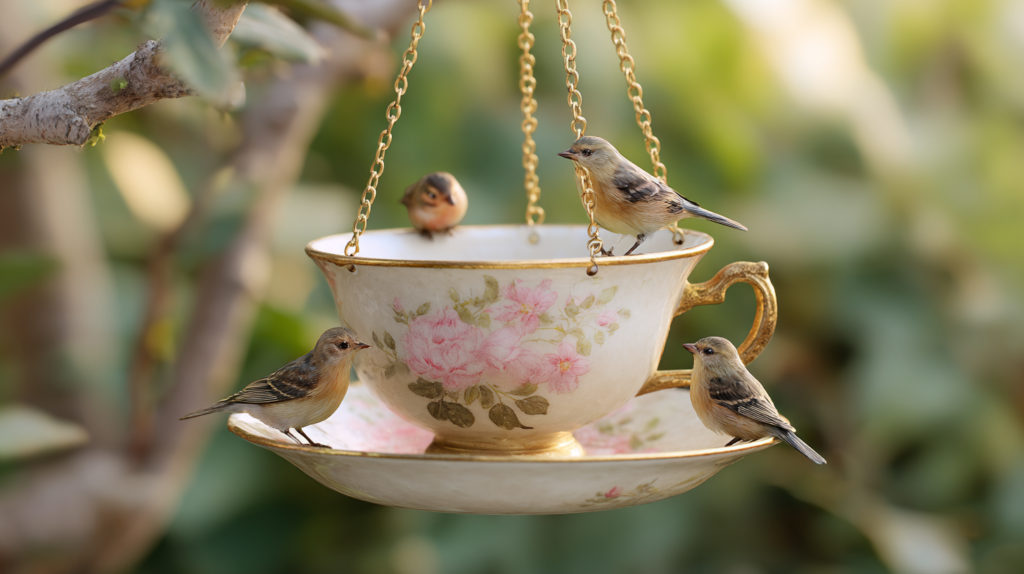
Transform chipped, mismatched, or otherwise unused teacups and saucers into charming vintage-style bird feeders that add character to any garden space.
Materials Needed:
- Orphaned teacup and saucer (thrift stores are excellent sources)
- Weather-resistant adhesive (clear epoxy or outdoor construction adhesive)
- Garden stake, dowel, or recycled broomstick
- Optional: Decorative beads, buttons, or recycled jewelry pieces
- Sandpaper
- Outdoor-safe sealer (if cups have cracks or chips)
Step-by-Step Instructions:
- Prepare Components: Clean and thoroughly dry the teacup and saucer. If there are any sharp edges from chips, smooth them with fine sandpaper.
- Create Base Structure: Apply weather-resistant adhesive to the bottom of the teacup and firmly press it onto the center of the saucer. For additional stability, position the cup on its side at a slight angle, allowing seeds to spill onto the saucer.
- Attach Support: Once the cup-to-saucer bond has dried (typically 24 hours), apply adhesive to the bottom of the saucer and attach it to your garden stake or dowel.
- Add Decorative Elements (Optional): Enhance your feeder with decorative elements like recycled jewelry pieces, glass beads, or buttons using the same weather-resistant adhesive.
- Apply Sealer (Optional): If your teacup has fine cracks, apply a food-safe, clear outdoor sealer to prevent water damage.
- Install and Fill: Push the stake firmly into garden soil in a visible location, fill the teacup and saucer with birdseed, and watch the birds discover your unique feeding station.
Creative Variation: “Create a ‘chandelier’ style multiple teacup feeder by attaching several cups and saucers at different levels to a hanging base like a repurposed plate,” suggests Megan Thompson, craft blogger and avid bird enthusiast. “This creates visual interest and allows multiple birds to feed simultaneously.”
Bird Species Attraction:
The open design of teacup feeders makes them particularly attractive to ground-feeding species like juncos, doves, towhees, and sparrows who typically prefer eating from platform-style feeders.
Project 5: Tin Can Suet Feeder
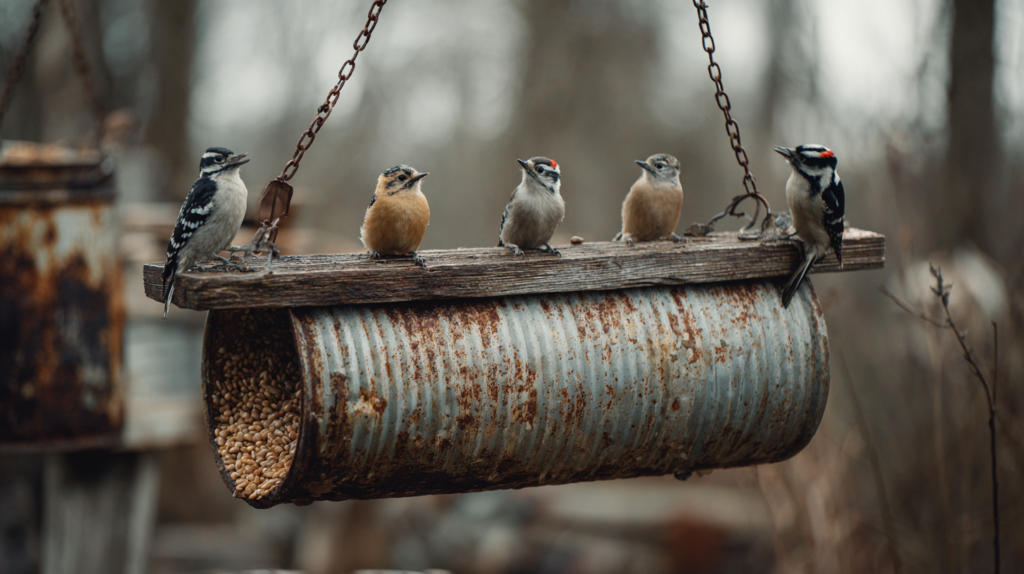
Perfect for attracting insect-eating birds like woodpeckers and nuthatches, this tin can suet feeder provides high-energy food while repurposing empty food cans.
Materials Needed:
- Clean, label-free tin can (coffee can or large soup can works well)
- Hammer and nail or electric drill with small bit
- Strong wire for hanging
- Non-toxic, outdoor paint (optional)
- Commercial suet cakes or homemade suet mixture
- Sandpaper
- Can Preparation: Thoroughly clean the can and remove the label. Use sandpaper to smooth any sharp edges around the opening.
- Create Drainage Holes: Punch or drill several small holes in what will be the bottom of your feeder to allow rainwater drainage.
- Make Access Holes: Create 4-6 half-inch diameter holes around the circumference of the can’s side for birds to access the suet. Space these holes at least 2 inches apart.
- Add Hanging Mechanism: Punch two holes opposite each other at the top rim of the can. Thread strong wire through these holes to create a hanging loop.
- Decoration (Optional): Apply non-toxic outdoor paint to the exterior for aesthetic appeal and additional rust prevention. Allow to dry completely.
- Fill with Suet: Insert store-bought suet cake or homemade suet mixture into the can.
- Position Strategically: Hang from tree branches or shepherd’s hooks, ideally in locations visible from your home for optimal bird watching.
Step-by-Step Instructions:
Homemade Suet Recipe:
- 1 cup crunchy peanut butter (no sugar added)
- 2 cups rolled oats
- 2 cups cornmeal
- 1 cup lard or vegetable shortening, melted
- 1 cup birdseed
- 1/4 cup dried mealworms (optional for extra protein)
Mix dry ingredients first, then incorporate melted fats. Allow mixture to cool and solidify before placing in feeder.
Expert Tip: “Position suet feeders on the east or north sides of your yard where they’ll receive less direct sunlight during hot weather,” advises ornithologist Dr. Robert Martínez. “This prevents the suet from melting too quickly and becoming rancid.”
Bird Species Attraction:
Suet feeders typically attract insect-eating birds including woodpeckers, nuthatches, chickadees, wrens, and occasionally warblers during migration seasons.
Project 6: Mason Jar Seed Dispenser
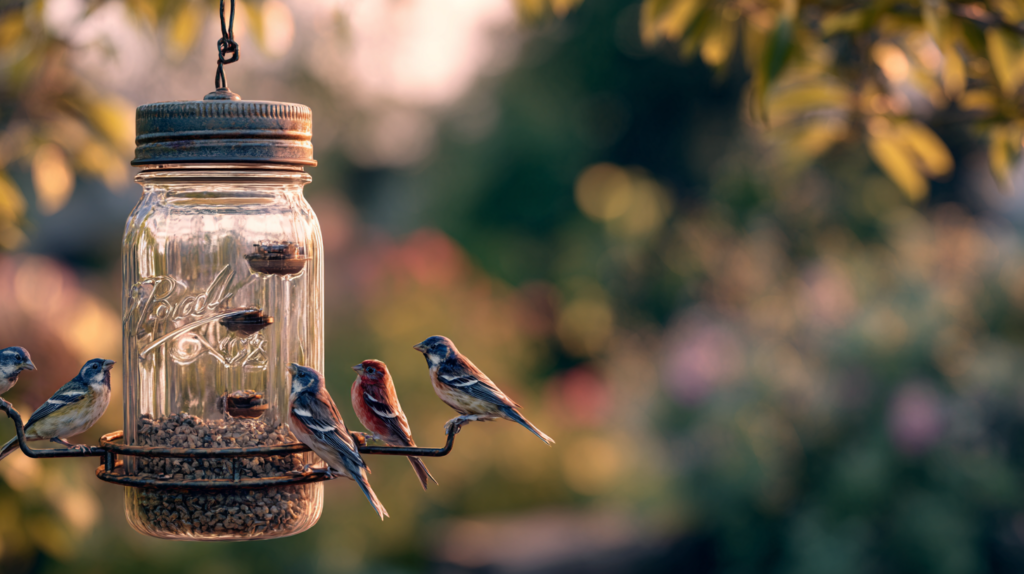
Mason jars—especially those with chips or cracks that make them unsuitable for food preservation—can be repurposed into attractive gravity-fed bird feeders.
Materials Needed:
- Mason jar with lid ring (quart or pint size)
- Small aluminum pie pan or recycled plastic plant saucer
- Strong wire or chain for hanging
- Drill with small bit
- Optional: Weather-resistant paint for the metal components
- Bird seed appropriate for target species
Step-by-Step Instructions:
- Prepare Components: Clean and thoroughly dry the mason jar. If using a metal pie tin, use sandpaper to smooth any sharp edges.
- Create Feeding Tray: Drill 4-8 small holes (approximately 1/8 inch diameter) in the center of the aluminum pie tin or plastic saucer. These holes will allow seed to flow from the jar onto the feeding platform.
- Drill Drainage Holes: Add several small drainage holes near the outer edge of the feeding tray to prevent water accumulation.
- Connect Components: Place the mason jar lid ring over the holes in the center of the feeding tray and trace around it. Cut out this center circle so the lid ring fits snugly into the feeding tray.
- Assembly: Screw the jar (without its flat sealing insert) into the lid ring that’s now attached to your feeding tray.
- Add Hanging Mechanism: Drill three evenly spaced holes around the edge of the feeding tray. Thread wire or chain through these holes, bringing them together above the inverted jar to create a hanging mechanism.
- Fill and Hang: Remove the jar from the lid ring, fill with seed, then reattach and invert the entire assembly. Hang from a branch, hook, or feeding station.
Functional Description: This design works on gravity principles—when birds land on the feeding tray, their movement causes small amounts of seed to shake down from the jar through the small holes, replenishing the feeding area without dispensing too much at once.
Design Variation: “For a more decorative approach, use colored glass jars or add glass gems to the feeding tray with weather-resistant adhesive,” suggests home gardening expert Patricia Lowe. “The reflective elements catch sunlight and can help birds locate your feeder more easily.”
Bird Species Attraction:
The platform-style feeding area attracts a wide variety of birds including cardinals, blue jays, grosbeaks, finches, and sparrows.
Project 7: Coconut Shell Feeder
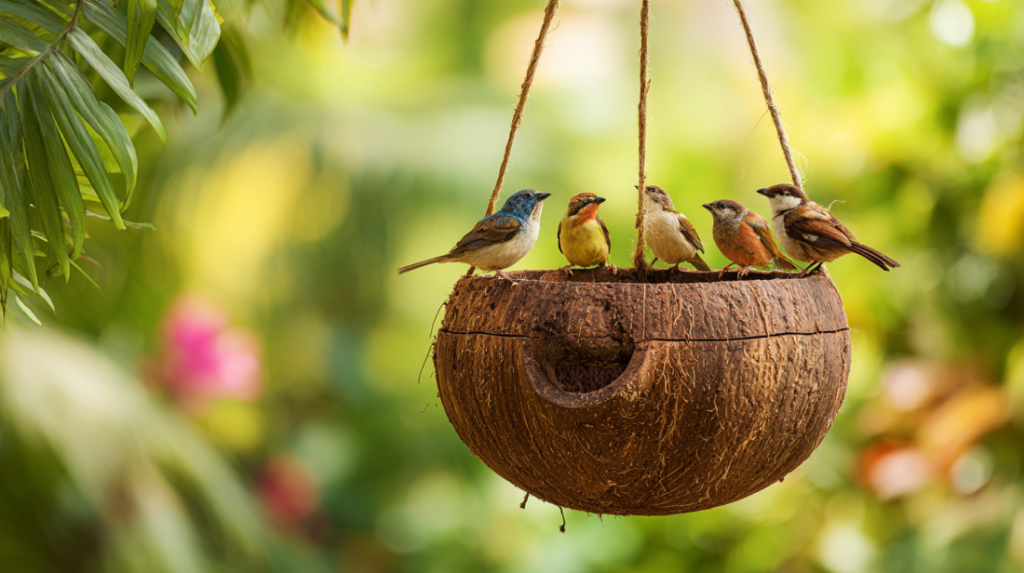
Natural coconut shells provide ready-made, biodegradable vessels for creating unique bird feeders with minimal additional materials.
Materials Needed:
- Empty coconut half-shell (from culinary coconut use)
- Drill with various bit sizes
- Jute twine or natural fiber cord
- Birdseed or suet mixture
- Sandpaper
Step-by-Step Instructions:
- Shell Preparation: Ensure all coconut meat has been removed from the shell. Sand the cut edge smooth to prevent bird injuries.
- Create Drainage: Drill 3-4 small holes in the bottom of the coconut shell for water drainage.
- Make Hanging Holes: Drill three evenly spaced holes around the upper edge of the coconut shell, approximately half an inch from the rim.
- Optional Access Port: For smaller birds, drill a 1-inch diameter hole in the side of the shell to create an additional feeding portal.
- Add Hanging Mechanism: Thread natural jute twine or cord through the three upper holes, bringing the ends together approximately 12 inches above the shell to form a hanging loop.
- Fill and Position: Fill the coconut shell with birdseed, suet mixture, or even fresh fruit pieces depending on the bird species you wish to attract.
- Hang Strategically: Position your coconut feeder at least 5 feet above ground level in a location visible from your home but offering birds some protective cover nearby.
Sustainability Note: Coconut shell feeders exemplify zero-waste bird feeding. When the feeder eventually deteriorates, it will naturally decompose without creating environmental harm.
Expert Insight: According to wildlife rehabilitator Elena Rodriguez, “Coconut shell feeders are particularly appealing to birds that naturally forage in tree cavities and crevices. The curved interior mimics natural feeding environments these species encounter in the wild.”
Bird Species Attraction:
Coconut shell feeders particularly appeal to chickadees, titmice, woodpeckers, nuthatches, and various wrens that naturally forage in cavities and crevices.
Best Practices for DIY Bird Feeder Maintenance
Creating bird feeders is just the beginning—proper maintenance ensures they remain safe and beneficial for avian visitors. Follow these essential practices:
Regular Cleaning Schedule
- Frequency: Clean feeders thoroughly every two weeks during cool weather and weekly during hot, humid periods.
- Cleaning Solution: Use a solution of one part bleach to nine parts hot water for disinfecting.
- Drying Process: Allow feeders to dry completely before refilling to prevent mold growth.
Seed Management
- Freshness Check: Inspect seed regularly for mold, clumping, or insect infestation.
- Quantity Control: Only fill feeders with amounts birds can consume within 2-3 days to prevent spoilage.
- Seasonal Adjustments: Provide higher fat content foods during winter months (suet, peanuts) and protein-rich options during nesting season.
Placement Strategy
- Predator Protection: Position feeders at least 10-12 feet from dense shrubs where predators might hide, but close enough to trees or shrubs (about 15 feet) to provide quick escape routes.
- Window Safety: Place feeders either within 3 feet of windows (too close for birds to gain dangerous momentum) or more than 30 feet away to reduce collision risk.
- Height Considerations: Most feeders should be hung 5-6 feet above ground to deter ground predators while remaining accessible for refilling.
Statistical Context: According to the Cornell Lab of Ornithology, dirty bird feeders contribute to the spread of diseases like avian conjunctivitis and salmonellosis, which affected approximately 10% of house finch populations in eastern North America in recent studies. Regular cleaning can significantly reduce these risks.
Types of Bird Feed for Different Species
Match your DIY feeder design with appropriate food to attract specific bird species:
Seed Types and Bird Preferences
| Seed Type | Primary Bird Attractions | Best Feeder Type |
| Black oil sunflower | Cardinals, chickadees, nuthatches, finches | Hopper or tube feeders (Plastic bottle, milk carton) |
| Nyjer/thistle | Goldfinches, siskins, redpolls | Special thistle feeders with small ports (Modified plastic bottle) |
| Safflower | Cardinals, grosbeaks, chickadees, doves | Platform feeders (Teacup, coconut shell) |
| Millet | Sparrows, juncos, doves, towhees | Ground or platform feeders (Teacup saucer) |
| Whole peanuts | Jays, woodpeckers, chickadees | Mesh feeders or platform feeders (Mason jar tray) |
| Suet | Woodpeckers, nuthatches, chickadees, wrens | Cage feeders (Tin can feeder) |
Expert Insight: “Different bird species have distinct feeding preferences and behaviors,” explains Dr. Margaret Chen, avian ecologist. “Ground-feeding birds like juncos prefer platform-style feeders, while chickadees and finches are comfortable hanging from tube feeders. By providing diverse feeder styles, you’ll attract the greatest variety of bird species.”
Seasonal Considerations for Bird Feeding
Adjust your DIY bird feeding strategy throughout the year to match birds’ changing needs:
Spring (March-May)
- Diet Support: Offer protein-rich foods like mealworms and high-quality seed blends to support nesting birds.
- Nesting Materials: Place collections of natural fibers, pet fur, or small strips of chemical-free cotton nearby for nest building.
- Feeder Placement: Increase distance between multiple feeders to reduce territorial conflicts during breeding season.
Summer (June-August)
- Water Sources: During hot weather, providing clean water becomes as important as food. Consider adding DIY recycled bird baths.
- Reduced Quantities: Many birds switch to insect-heavy diets and natural food sources during summer; offer smaller amounts of seed to prevent spoilage.
- Cleaning Frequency: Increase cleaning schedule to weekly during hot, humid weather to prevent seed spoilage and mold growth.
Fall (September-November)
- Migration Support: Increase high-energy food offerings to support migrating species passing through your area.
- Consistent Supply: Begin establishing reliable feeding patterns that resident winter birds can depend on.
- Natural Complements: Plant native seed-bearing flowers and shrubs to complement your feeder offerings.
Winter (December-February)
- High-Energy Foods: Emphasize suet, peanuts, and black oil sunflower seeds to help birds maintain body heat.
- Extended Hours: Fill feeders earlier in morning and later in evening during winter’s shorter days.
- Multiple Stations: Create several feeding stations to reduce competition during times of natural food scarcity.
Conservation Perspective: “Winter feeding can significantly impact bird survival rates,” notes conservation biologist Thomas Wright. “Studies show that areas with consistent winter bird feeding support up to 35% higher winter survival rates for resident species like chickadees and nuthatches compared to areas without supplemental feeding.”
Common Problems and Solutions
Even the best-designed DIY bird feeders may encounter challenges. Here are solutions to common issues:
Squirrel Invasions
Problem: Squirrels consuming large quantities of birdseed and damaging feeders.
Solutions:
- Mount feeders on smooth metal poles at least 5 feet high
- Add baffles above and below hanging feeders
- Mix hot pepper flakes into seed (birds can’t taste capsaicin, but squirrels dislike it)
- Position feeders at least 10 feet from structures squirrels could jump from
Seed Spoilage
Problem: Seed becomes moldy or clumps after rainfall.
Solutions:
- Improve drainage by adding more/larger drainage holes
- Enhance weather protection with larger “roof” elements
- Fill feeders with smaller amounts more frequently
- Consider weather-resistant feeder designs during rainy seasons
Dominant Bird Species
Problem: Aggressive birds like grackles or starlings monopolizing feeders.
Solutions:
- Use feeders with smaller perches that don’t accommodate larger birds
- Offer safflower seed, which grackles and starlings typically avoid
- Create multiple feeding stations spaced throughout your yard
- Use weight-sensitive feeders that close under heavier birds’ weight
Predator Concerns
Problem: Cats or hawks targeting birds at feeders.
Solutions:
- Position feeders near protective cover but not directly next to dense shrubbery
- Add reflective elements that may deter predators
- Install brush piles near feeders as quick escape locations
- Consider enclosed feeder styles that offer more protection
Expert Perspective: Wildlife photographer James Peterson observes, “The most successful backyard bird habitats offer a careful balance of exposure and protection. Birds need to see approaching threats while having quick access to cover. Position your DIY feeders with this balance in mind.”
The Impact of Bird Feeding on Conservation
While DIY bird feeders provide immediate benefits to local birds, they also contribute to broader conservation efforts:
Citizen Science Opportunities
Maintaining bird feeders creates valuable opportunities to participate in citizen science projects that track bird populations and behaviors:
- Project FeederWatch: This Cornell Lab of Ornithology program collects data from backyard bird feeding stations across North America to track winter bird population trends.
- Great Backyard Bird Count: An annual February event encouraging people to count birds at feeders and natural areas to create a real-time snapshot of bird distribution.
- eBird: A year-round platform for recording bird observations that contributes to scientific understanding of bird migration, range expansion, and population trends.
Educational Value
DIY bird feeders serve as living classrooms for observing:
- Species identification skills
- Animal behavior patterns
- Seasonal changes and migration timing
- Local biodiversity assessment
- Ecological relationships and interdependence
Habitat Support
According to the National Wildlife Federation, yards with bird feeding stations typically develop greater overall biodiversity, as they:
- Attract beneficial insects that serve as additional food sources
- Encourage property owners to add native plants that support birds
- Create awareness of invasive species and their impacts
- Foster emotional connections with wildlife that promote conservation attitudes
Conservation Perspective: Dr. Elena Rivera, urban ecology researcher, emphasizes: “While bird feeding alone cannot substitute for habitat preservation, studies indicate that properly maintained feeding stations contribute significantly to urban and suburban biodiversity. Homeowners who begin feeding birds typically develop increased interest in broader habitat improvement practices like native plantings and reduced pesticide use.”
DIY Bird Feeder FAQ
How can I prevent mold growth in my DIY bird feeders?
Mold prevention begins with proper feeder design. Ensure adequate drainage holes in all seed-holding areas and position feeders where they receive some airflow and partial sun exposure. Clean feeders regularly (every 1-2 weeks) with a 10% bleach solution, rinsing thoroughly and allowing complete drying before refilling. Only provide amounts of seed birds can consume within 2-3 days, especially during humid weather.
Are there any household materials I should avoid using in DIY bird feeders?
Avoid using containers that previously held toxic substances like cleaning products or chemicals. Never use pressure-treated wood, which contains preservatives harmful to birds. Avoid metallic paints, which may contain zinc or lead. Steer clear of nylon netting that birds can become entangled in, and never use materials treated with pesticides or fungicides.
When is the best time to put out DIY bird feeders?
Bird feeders can be beneficial year-round, but beginning in late fall allows birds to discover your feeding station before winter food scarcity. Consistency matters more than timing—once you start feeding birds, they may come to depend on your feeder as part of their foraging territory, especially during winter months. If you plan to discontinue feeding, spring and early summer are the best times when natural food sources are becoming more abundant.
How can I attract specific bird species to my DIY feeders?
Research your target species’ feeding preferences and behaviors. For example, woodpeckers and nuthatches prefer suet feeders, while goldfinches favor nyjer seed in special thistle feeders. Ground-feeding birds like juncos and towhees prefer platform-style feeders close to the ground, while chickadees and titmice readily use hanging tube feeders. Match your DIY feeder design and seed type to your desired species’ preferences.
Is it necessary to clean DIY bird feeders, and if so, how often?
Regular cleaning is essential for preventing the spread of diseases among birds. Clean all feeders every two weeks during cool weather and weekly during hot, humid periods. Soak feeders in a solution of one part bleach to nine parts hot water for 10 minutes, scrub with a bottle brush, rinse thoroughly, and allow to dry completely before refilling. This schedule should be accelerated if you observe sick birds at your feeders.
How can I keep squirrels from raiding my DIY bird feeders?
Employ multiple deterrent strategies: mount feeders on smooth metal poles at least 5-6 feet high; add baffles above hanging feeders and below pole-mounted feeders; position feeders at least 10 feet from structures squirrels could jump from; use weight-sensitive feeders that close under a squirrel’s weight; or add hot pepper flakes to seed (birds can’t taste capsaicin, but squirrels find it unpleasant).
Conclusion
Creating DIY bird feeders from recyclable materials represents a perfect intersection of environmental responsibility, wildlife conservation, and creative expression. These projects transform ordinary household waste into valuable wildlife habitat while providing hours of bird-watching enjoyment and educational opportunities. By upcycling items that would otherwise enter the waste stream, you’re making a tangible contribution to sustainability efforts while creating essential supplementary food sources for local and migratory bird populations.
As we’ve explored through these seven DIY bird feeder designs, the possibilities are nearly limitless—from simple plastic bottle conversions to charming teacup feeders and natural coconut shell habitats. Each project offers unique benefits for different bird species while addressing environmental concerns about single-use materials.
Remember that successful bird feeding involves more than just creating feeders—regular maintenance, proper placement, appropriate seed selection, and seasonal adjustments all contribute to a bird-friendly environment that supports avian health and biodiversity. By applying the expert tips, scientific insights, and best practices outlined in this guide, you’ll create not just bird feeders, but a comprehensive backyard bird habitat that benefits wildlife while bringing nature’s beauty directly to your doorstep.
Have a similar experience with your DIY bird feeder projects? Share it in the comments below!

